
You’ve created something new and useful, whether it’s an anti-aging cream, a new garden tool, or even a mobile phone power transfer technique. Bravo! But you might be wondering: Is it possible to patent my invention? This is a question that inventors consider shortly after their eureka moments. A patent provides the much-needed assurance that no one else will profit from your idea. However, you need to first apply for one. And before that? Confirm that you were the first to think of your innovative idea. That’s where XLSCOUT’s AI-based patent search tool, Novelty Checker, comes in to help you decide whether pursuing a patent is worthwhile.
So, how do you calculate your chances of obtaining a patent? Although most countries adhere to their own criteria for obtaining patents, they all have some similarities. Notably, the United States Patent and Trademark Office (USPTO) establishes some patent eligibility criteria, which we’ll discuss shortly.
Let’s investigate what makes an idea patentable.
How to Determine Whether Your Invention Is Patentable?
Filing a patent application with your country’s patent office is the most expensive way to obtain a patent. A single round of patent office negotiations could cost you around $5,000 USD. But why go in blind?
A little bit of homework goes a long way. Continue reading to find out what it takes to obtain a patent.
You’ll also learn how AI-based patent search or prior art search, is an important first step in making patents more convenient and accessible for inventors.
Conditions for Obtaining a Patent
As long as the innovation meets these criteria, everything man-made is patentable.
First and foremost, your invention must be novel—the first of its kind. If that’s the case, the patent office will gladly issue you a patent. However, it is their responsibility to ensure that no two people receive the same patent. How do they deal with this? Thank you for inquiring — it’s known as a “prior art search.” It searches for inventions that are:
- Available for purchase or have already been patented
- Described in another inventor’s patent application prior to the date you submit your application
- Described in any publicly available document, such as research papers, product brochures, magazine articles, and so on
- Available to the public in any way (YouTube, conference presentation, online, etc.)
Even if your invention is “technically” novel (such as a chair with wheels), it may still be denied due to “obviousness.”
Assume you invented a chair with wheels to make it easier to move around the office. But wait… There are already office chairs. It’s also common knowledge that wheels make it simple to move objects, such as a trolley or a car. So, adding wheels to the chair seems obvious. And you get a patent rejection based on obviousness. Do you see the problem?
Lastly, the innovation should be useful and functional.
Here’s an illustration. Assume you invented a machine designed to chop down trees, but in practice, it barely cuts into the tree and easily breaks down. Unfortunately, your invention does not meet the requirement of usefulness.
Novel? Check. Non-obvious? Check. Is it useful? Check. At least mentally. But how can you be sure?
It’s time to look into patents and prior art.
Patent Search
Patent searches are restricted to patent literature. When you file a patent application, one of the USPTO’s thousand examiners will perform a thorough patent search to identify inventions similar to yours in patents and patent applications, whether published or unpublished. Patent examiners also perform non-patent literature searches.
Prior Art Search
Prior art extends beyond patent literature to include disclosures, publications, and anything else that confirms someone else invented your invention. It includes both patent and non-patent literature, such as journals, books, periodicals, products, and any publication, as well as patents and patent applications.
But here’s the thing: sifting through millions of prior art items could take a long time. And what if you hire a lawyer or a law firm to do it? It would most likely cost you thousands of dollars.
As a practical step, you, the inventor, should conduct your own prior art search/ patent search to determine the patentability of your invention.
How do you do it?
Using a prior art search tool designed for inventors, such as XLSCOUT’s Novelty Checker. Instead of a complex Boolean keyword search string, you can utilize the tool to describe your innovation in simple words on the search interface.
How to Conduct an AI-based Patent Search Using XLSCOUT?
The Novelty Checker from XLSCOUT makes prior art searches easier for inventors. The tool searches for similar inventions to yours to determine whether a patent is feasible.
Using AI for patent search: A step-by-step guide to conducting an AI-based patent search with Novelty Checker is provided below:
Step 1 – Submit your Idea
Enter the Key Features of your Idea in Simple Words
Assume you created a battery-powered potato peeler. The peeler shaves potato peels smoothly and effortlessly with the press of a button.
So, how should you start your search? Begin with entering the problem you are trying to solve, then the invention title or technology domain, followed by key features or invention details of your invention in simple words. You can then either supervise the search (advanced search) or simply proceed to the search results.
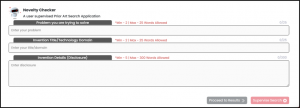
Step2 – Supervise the Machine
Review the Top Results
Take a look at the results.
You may notice a variety of potato peelers with and without patents similar to yours. Our AI-based patent search tool displays the Top-20, 50, or 100 closest results along with the similarity score and feature mapping with respect to the invention. You can screen your ideas by comparing them with more than 150 million patents and 220 million+ research publications in real time.
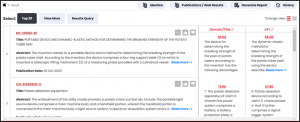
XLSCOUT has employed Generative AI in its patent search tool. Using this, XLSCOUT is assisting individuals and organizations come up with new and innovative solutions to problems. Ideacue by XLSCOUT is designed to assist inventors with idea generation. We have created an Idea Playground powered by Generative AI for inventors. It suggests machine-generated inventive concepts to inventors, which they can combine with their own ideas to improve. These ideas can be generated based on the user’s preferred technology. As an interactive dashboard, Idea Playground allows users to select inventive concepts and sub-concepts and generate AI-based ideas based on them.
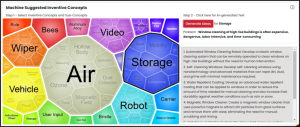
Inventive concepts act like idea triggers that can be used to simulate ideation and generate new ideas. Subsequently, these can be very useful for inventors. They assist them in thinking outside the box and developing creative solutions that they would not have considered otherwise. Along with ideation, idea evaluation is also an important part of the innovation cycle. XLSCOUT also includes an Idea Dashboard. The easy-to-use dashboard helps you with idea evaluation, brainstorming, and improving idea quality. It provides numerous other insights while significantly increasing the efficiency of research and development. The dashboard assists inventors in quickly assessing the strengths and weaknesses of their ideas in a few simple steps. It gives a qualitative indication of the strength of an idea. Subsequently, using the indicator, inventors can determine whether or not their idea is ready to move forward. Or whether it requires more brainstorming or iterations.
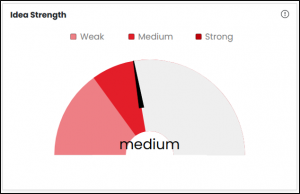
Step3 – Novelty Search Report
Get an Automated Novelty Report within 5 minutes!
If any relevant results are found, click “Generate Report.” After that, a PDF report will be emailed to you. The Novelty Checker’s Automated Novelty Reports include a list of results along with relevant text mapping with the key features of the invention for enabling quick decision-making.
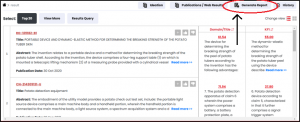
Our Methodology
XLSCOUT put the use of reinforcement learning to its AI-based Novelty Checker (patent searching tool) to get quality patent research reports in just 5 minutes. The Novelty Checker uses reinforcement learning to filter the noise from the prior art by pulling up the relevant results on top of the list. To be precise, it assists in conducting patentability search to help you ensure that your innovation is unique. By selecting a few relevant and non-relevant results, users can apply them to the result set. The system takes the user’s feedback and then learns from it. It uses conceptual searching and re-ranks the results by bringing the quality results to the top and sending the noise to the bottom.
Without reinforcement learning, users go through hundreds of results manually. By applying this process, users can skip going through the non-relevant results. Reinforcement can also be applied multiple times to a result set according to users’ different requirements/criteria. Users can then view the Top-10 or Top-20 results for each criterion to perform a prior-art analysis for idea validation. Users can quickly generate an automated novelty report by selecting these Top-10 or 20 results.

